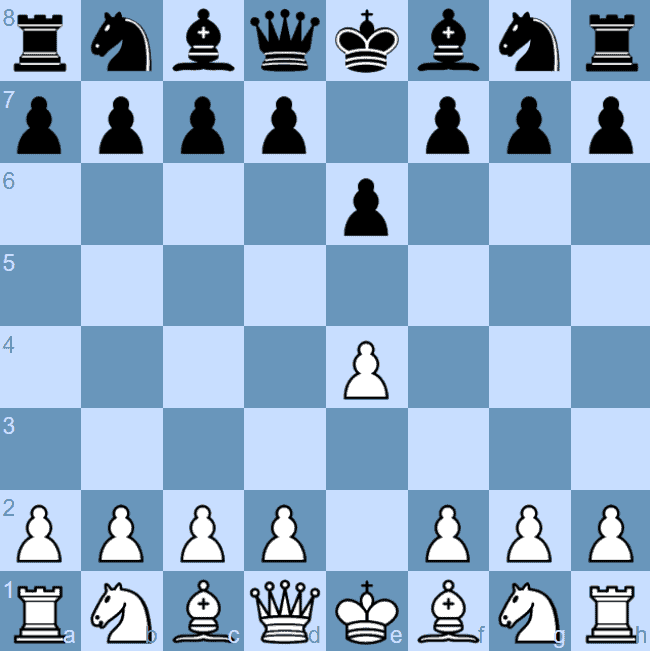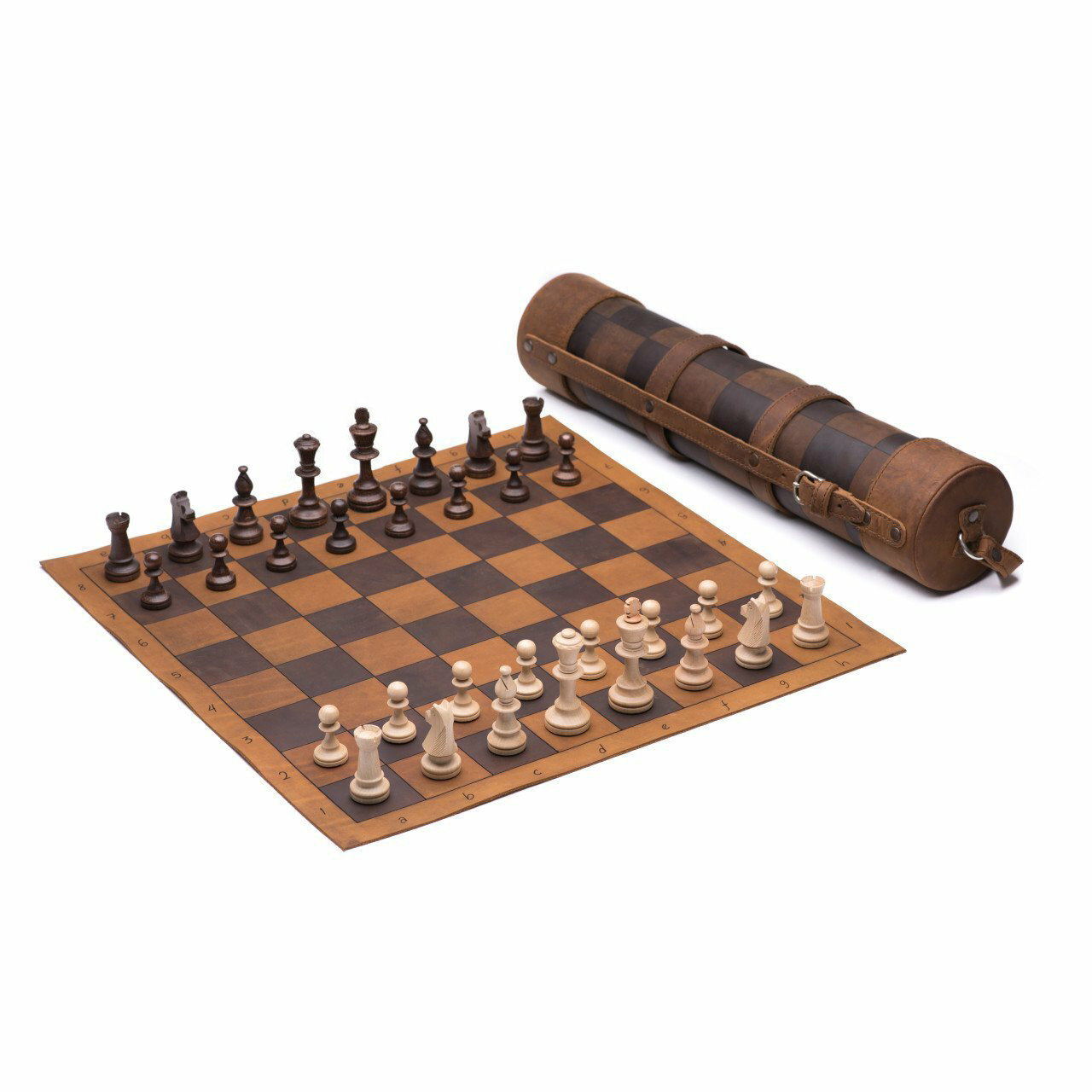Chess is a game of strategy and skill. The opening moves set the stage for the entire match.
Knowing the most popular chess openings can improve your game. Each opening has its own strengths and tactics. By mastering these, you can gain an early advantage over your opponent. Whether you’re a beginner or an experienced player, understanding these openings is crucial.
They help you control the board and dictate the pace of the game. We will explore the 10 most popular chess openings. Discover how these openings can enhance your strategy and boost your chances of winning. Ready to dive in and learn more? Let’s get started!
:max_bytes(150000):strip_icc()/most-common-chess-openings-611517-ItalianGame-d19b95f0b1094504abe83e43a1b37f24.jpg)
Credit: www.thesprucecrafts.com
Introduction To Chess Openings
Chess openings set the stage for the entire game. They are the first moves in a chess game, and they can greatly influence the flow of the game. Understanding and practicing the most popular chess openings can give you a strong start and a strategic advantage.
Importance Of Openings
The opening is crucial for developing your pieces and controlling the center of the board. A good opening can lead to a solid position, making it easier to execute your strategy. Conversely, a poor opening can put you at a disadvantage from the start.
Knowing popular openings helps you anticipate your opponent’s moves. It also allows you to plan your strategy more effectively.
Basic Principles
There are a few basic principles to remember in chess openings:
- Control the Center: Move your pawns to the center of the board (e4, d4, e5, d5).
- Develop Your Pieces: Bring your knights and bishops into play early.
- King Safety: Ensure your king is safe by castling early.
- Don’t Move the Same Piece Twice: Develop all your pieces for a better position.
- Avoid Early Queen Moves: Moving the queen too early can make it a target.
Following these principles can help you achieve a strong and balanced position in the opening phase.
Ruy Lopez
The Ruy Lopez is one of the oldest and most respected chess openings. Named after a 16th-century Spanish priest, it remains a favorite among players at all levels. This opening can lead to complex, strategic positions that challenge both players.
History And Origin
The Ruy Lopez, also known as the Spanish Opening, dates back to the 1500s. It was first analyzed by the Spanish priest Ruy López de Segura. He was one of the early pioneers of modern chess theory. His work helped shape many of the principles still used today. This opening gained popularity in the 19th century. Chess masters like Wilhelm Steinitz and Paul Morphy used it to great effect.
Key Moves And Variations
The Ruy Lopez begins with the moves:
- 1. e4 e5
- 2. Nf3 Nc6
- 3. Bb5
Here, White’s third move, Bb5, attacks the knight on c6. This puts pressure on Black’s e5 pawn.
There are several important variations within the Ruy Lopez:
- Morphy Defense: 3…a6
- Closed Ruy Lopez: 4. Ba4 Nf6 5. O-O Be7
- Open Ruy Lopez: 4. Ba4 Nf6 5. O-O Nxe4
- Steinitz Defense: 3…d6
- Berlin Defense: 3…Nf6
Each variation leads to different types of positions. The Morphy Defense is the most popular. It allows Black to challenge White’s bishop. The Closed Ruy Lopez leads to a slow, strategic game. The Open Ruy Lopez can become very tactical. The Steinitz Defense is solid but passive. The Berlin Defense is known for its drawish nature, favored in top-level play.
Understanding these key moves and variations is crucial. They help you navigate the Ruy Lopez effectively.
Sicilian Defense
The Sicilian Defense is one of the most popular chess openings. It begins with the moves 1.e4 c5. This defense is known for its imbalance and complexity. Many players enjoy its rich strategic possibilities.
Common Variations
The Sicilian Defense has several well-known variations. Here are a few:
- Open Sicilian: 2. Nf3 followed by 3. d4
- Closed Sicilian: 2. Nc3
- Dragon Variation: 2. Nf3 d6 3. d4 cxd4 4. Nxd4 Nf6 5. Nc3 g6
- Najdorf Variation: 2. Nf3 d6 3. d4 cxd4 4. Nxd4 Nf6 5. Nc3 a6
- Scheveningen Variation: 2. Nf3 d6 3. d4 cxd4 4. Nxd4 Nf6 5. Nc3 e6
Strategic Advantages
The Sicilian Defense offers several strategic advantages:
- Counterattack opportunities: Black often gets strong counterplay.
- Imbalance: Creates asymmetrical positions that provide rich strategic plans.
- Flexibility: Many variations allow players to choose their preferred style.
- Pawn structure: The c5 pawn can control the center and open lines for pieces.
- Endgame potential: Often leads to favorable endgames for Black.
These advantages make the Sicilian Defense a favorite among both amateur and professional players. Its complexity and depth offer endless learning opportunities.

Credit: www.chessable.com
French Defense
The French Defense is a popular and solid opening choice in chess. It starts with the moves 1. e4 e6. This defense focuses on creating a strong pawn structure. The French Defense is favored by players who enjoy strategic and positional play.
Main Lines
There are several main lines in the French Defense. One common line is the Advance Variation. It starts with 1. e4 e6 2. d4 d5 3. e5. Another popular line is the Exchange Variation. It begins with 1. e4 e6 2. d4 d5 3. exd5 exd5. The Classical Variation is also well-known. It follows the moves 1. e4 e6 2. d4 d5 3. Nc3 Nf6.
Positional Play
Positional play is a key aspect of the French Defense. Players focus on pawn structure and piece activity. The pawn chain in the French Defense is important. It often creates a solid defense and controls key squares. Controlling the center of the board is crucial. This can lead to strong positions and better chances in the endgame.
Caro-kann Defense
The Caro-Kann Defense is a solid chess opening that starts with the moves 1. e4 c6. Named after Horatio Caro and Marcus Kann, this defense is known for its strong, resilient structure. It provides black with a reliable way to counter white’s aggressive opening moves. The Caro-Kann is favored by many players for its flexibility and defensive strength.
Defensive Structure
The Caro-Kann Defense is well-known for its solid defensive structure. This defense typically leads to a pawn structure where black’s pawns on c6, d5, and e6 form a strong shield. This structure makes it difficult for white to break through. Black’s pawn on d5 is especially important, as it controls the center and prepares for future counter-attacks.
Here is a common pawn structure in the Caro-Kann Defense:
| Black Pawns | Position |
|---|---|
| c6 | Defending b5 and d5 |
| d5 | Controlling the center |
| e6 | Supporting d5 and opening for the bishop |
Counter-attacking Options
The Caro-Kann is not just about defense. It also offers counter-attacking options. Black can often counter-attack in the center with moves like …c5 or …f6. These moves can open lines for black’s pieces and create opportunities to challenge white’s control of the center.
For example, after the following moves:
1. e4 c6 2. d4 d5 3. Nc3 dxe4 4. Nxe4 Bf5
Black can prepare to counter-attack with …Nd7 and …Ngf6, putting pressure on white’s advanced pieces.
Overall, the Caro-Kann Defense offers a blend of solid structure and dynamic counter-play. This makes it a valuable tool in any chess player’s opening repertoire.
Queen’s Gambit
The Queen’s Gambit is one of the oldest chess openings. It starts with 1.d4 d5 2.c4. This opening aims to control the center. It challenges black to either accept or decline the gambit. The Queen’s Gambit is popular among both beginners and grandmasters. It offers dynamic play and rich strategic ideas.
Accepted Vs Declined
In the Queen’s Gambit Accepted (QGA), black takes the pawn with 2…dxc4. This leads to open and tactical positions. Black aims to hold onto the pawn or give it back later for development. In the Queen’s Gambit Declined (QGD), black maintains the pawn on d5 with 2…e6. This setup leads to solid and strategic games. Black often develops pieces behind the pawns to maintain a strong center.
Popular Lines
The QGA has many popular lines. One famous line is the Main Line: 1.d4 d5 2.c4 dxc4 3.Nf3 Nf6 4.e3 e6 5.Bxc4 c5. This line is tactical and sharp. It requires precise play from both sides. Another popular line is the Classical Defense: 1.d4 d5 2.c4 dxc4 3.Nf3 Nf6 4.e3 e6 5.Bxc4 c5 6.O-O a6. This line is more positional and strategic.
The QGD also has several popular lines. The Orthodox Defense: 1.d4 d5 2.c4 e6 3.Nc3 Nf6 4.Bg5 Be7 5.e3 O-O 6.Nf3 Nbd7 is a classic choice. It offers solid and flexible play. The Tarrasch Defense: 1.d4 d5 2.c4 e6 3.Nc3 c5 is another line. It leads to open and dynamic positions. The Semi-Slav Defense: 1.d4 d5 2.c4 c6 is a hybrid approach. It combines solid defense with counter-attacking chances.
King’s Indian Defense
The King’s Indian Defense is a popular opening in chess. It offers dynamic and aggressive play. This opening is favored by many grandmasters. It allows Black to counter-attack and create complex positions.
Aggressive Approach
The King’s Indian Defense is known for its aggressive approach. Black allows White to control the center. Then, Black strikes back with pawns and pieces. This creates tension and opportunities for counter-play.
Players use the fianchetto of the bishop. This means placing the bishop on g7. This gives the bishop long-range power. Black also pushes the d6 and e5 pawns. This challenges White’s center control.
Key Strategies
One key strategy is the pawn push. Black often pushes the f5 pawn. This opens lines for the rook and bishop. Another strategy is piece coordination. Black aims to coordinate the knight and bishop. This targets weak points in White’s camp.
Another critical strategy is the pawn break. Black looks to break with c5 or e5. This opens the center and creates attacking chances. Timing these breaks is crucial. It can turn the game in Black’s favor.
In the King’s Indian Defense, planning is essential. Black must plan for both defense and attack. Understanding these strategies can improve your game.
Nimzo-indian Defense
The Nimzo-Indian Defense is a popular chess opening. It starts with the moves 1.d4 Nf6 2.c4 e6 3.Nc3 Bb4. This opening is known for its strategic depth. It aims to disrupt White’s pawn structure and gain control over key squares.
Key Concepts
The Nimzo-Indian Defense focuses on controlling the center with pieces. Black often delays the development of pawns. This creates flexibility. The move Bb4 pins the knight on c3. This can lead to doubled pawns on c3 if Black exchanges the bishop for the knight.
Black aims to play d5 at the right moment. This helps to challenge White’s center. The Nimzo-Indian can lead to rich, complex positions. Players need to understand pawn structures and piece activity.
Common Plans
One common plan for Black is to exchange the bishop on b4 for the knight on c3. This can result in White having doubled pawns on the c-file. Black often follows up with b6 and Bb7. This fianchetto setup adds pressure to the center.
Another plan involves playing …c5. This move challenges White’s center and opens the c-file for Black’s rook. Black may also aim to break with …d5. This can lead to a dynamic and open game.
Black must be careful with timing and move order. This ensures that White does not gain too much initiative. Proper piece placement and coordination are key. This is true in the Nimzo-Indian Defense.
English Opening
The English Opening is a popular and flexible choice for players of all levels. It begins with the move 1. c4, which aims to control the center and prepare for a strategic game. This opening allows for a variety of setups and plans, making it a favorite among many chess enthusiasts.
Flexible Strategies
The English Opening offers numerous strategic options. Players can choose to develop their pieces in a variety of ways, adapting to their opponent’s responses. This flexibility allows for a dynamic and unpredictable game.
- One common strategy is the Botvinnik System, which involves playing
g3andBg2to control the long diagonal. - Another popular plan is the Reversed Sicilian, where White aims to mirror Black’s setup in the Sicilian Defense.
These strategies often lead to complex and rich positions, making the English Opening an exciting choice.
Typical Pawn Structures
The English Opening can lead to a variety of pawn structures, each with its own strategic themes. Understanding these structures helps players navigate the middle game more effectively.
| Structure | Description |
|---|---|
| Symmetrical | Both sides have similar pawn formations, leading to a balanced game. |
| Hedgehog | Black adopts a compact setup, waiting for White to overextend. |
| Maroczy Bind | White places pawns on c4 and e4, restricting Black’s pawn breaks. |
Recognizing these structures allows players to plan their moves effectively and capitalize on their opponent’s weaknesses.

Credit: www.youtube.com
Frequently Asked Questions
What Are The Most Popular Chess Openings?
The most popular chess openings are the Ruy Lopez, Sicilian Defense, French Defense, Caro-Kann Defense, and Queen’s Gambit. These openings are widely used by both beginners and advanced players due to their strategic depth and effectiveness.
Why Is The Sicilian Defense Popular?
The Sicilian Defense is popular because it allows Black to counterattack and unbalance the game. It provides numerous opportunities for dynamic play, making it favored by aggressive players. The opening has been extensively analyzed and is used in many high-level games.
How Does The Ruy Lopez Benefit Players?
The Ruy Lopez benefits players by controlling the center and developing pieces harmoniously. It leads to a strong, flexible position, offering many strategic possibilities. This opening is a favorite among top players for its classical and solid nature.
What Makes The French Defense Effective?
The French Defense is effective due to its solid structure and counterattacking potential. It allows Black to create a strong pawn chain and prepare for counterplay. This opening is favored for its resilience and strategic depth.
Conclusion
Chess openings set the stage for the game. Mastering these top 10 openings helps you play better. Each opening has unique strategies. Learn them to gain an advantage. Practice regularly to improve your skills. Remember, understanding openings is just the start.
Enjoy the game and keep learning. Chess is a journey, not a destination. Happy playing!







